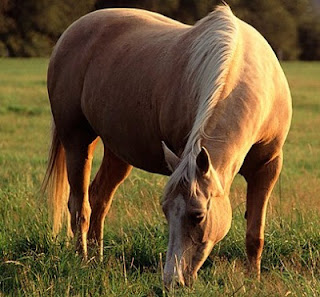At the risk of sounding 'Horse Obsessed' (given that 3 out of the last 5
postings have had the word 'horse' somewhere in the title), I must just add one more thought to the current debate on the addition of our favourite
non carnivorous mammal to the dining table.
As the Daily Mail splashes
pictures of 'cute' looking horses across its front page (with the caption
"Bon Appetit: The French see this as food!"), Mail journalists note
that, whilst not illegal to sell horsemeat in the UK "there are no
restaurants or butchers that do so as there is no demand". "It all
sounds very Continental, so brutally French" the paper concludes, so
"far removed from anything that would happen in horse-loving Britain
The Mail, and many other papers, reporters and cultural commentators, agree that the consumption of equine quadrupeds is thoroughly
Un-British, horse being something that, as one journalist on the BBC
commented, "has traditionally never been eaten in the UK BBC ,
but of all meat consumed in Britain
Archaeological
evidence, painstakingly retrieved from the well-preserved Paleolithic sequence at Boxgrove in West Sussex since the early 1980s, suggests
that, around 500,000 years ago, bear, deer, rhinoceros and horse were all
preyed upon by our early human ancestors.
One of the most interesting areas
examined at Boxgrove (site GTP 17), contained the partially dismembered remains
of a horse; evidence for the systematic butchery of the carcass being provided
by a detailed examination of the surviving bones, all displaying a variety of
cut marks, scrape marks, impact fractures and breakage patterns. Marks
preserved across the horse skull further indicated the filleting of muscles,
removal of the jaw, and final breaking apart to extract fatty tissue.
Additional cut and scrape marks across the pelvis and leg bones indicate
dismemberment, filleting and extraction of marrow.
Other
bones retrieved from Boxgrove indicate similar deliberate dismemberment of
animal carcasses, most notably a horse femur (from area Q1/B) which displayed
filleting scrapes, disarticulation marks and impact fractures consistent with
the use of a hammerstone and stone anvil to break the bone apart.
No
obvious signs of a deliberate and effective hunting strategy have been firmly
detected from the site (as yet), though part of a horse shoulder blade (recovered
from butchery area GTP 17) possessed a semicircular puncture wound inconsistent
with the other impact fractures recorded from the animal carcass. The
‘puncture’ is ambiguous, but it could have been created by a high-speed impact,
such as one would expect from penetration by a sharpened wooden spear.
However
this particular horse died, it is clear that our ancestors had first access to
the body, for signs of carnivore gnawing were always secondary to cut marks
produced by flint tools. Also, where individual animal skulls were recovered,
the evidence suggests that certain soft body parts, such as the eyes, remained
in place at the time of deposition and had not been removed through scavenging
activity.
The
earliest evidence for food procurement in the British Isles therefore
suggests that, contrary to the current belief of the British Press, horse meat
was not only top of the ancestral list of edible favourites, but also represents the
most traditional meat eaten in the UK, having been a staple for at least
half a million years (far, far longer than cow, pig or sheep).
If
only someone would let the Daily Mail and BBC know.




You have convinced me dr R, and I am off to buy a pony immediately!
ReplyDeleteThere was a headline on the BBC News Channel this morning that said, quite simply:
ReplyDeleteHORSE MEAT TALKS
Terrifying...
I hear they found that the meat in one of those beef lasagnes was 100% horse. What a complete mare!
Delete